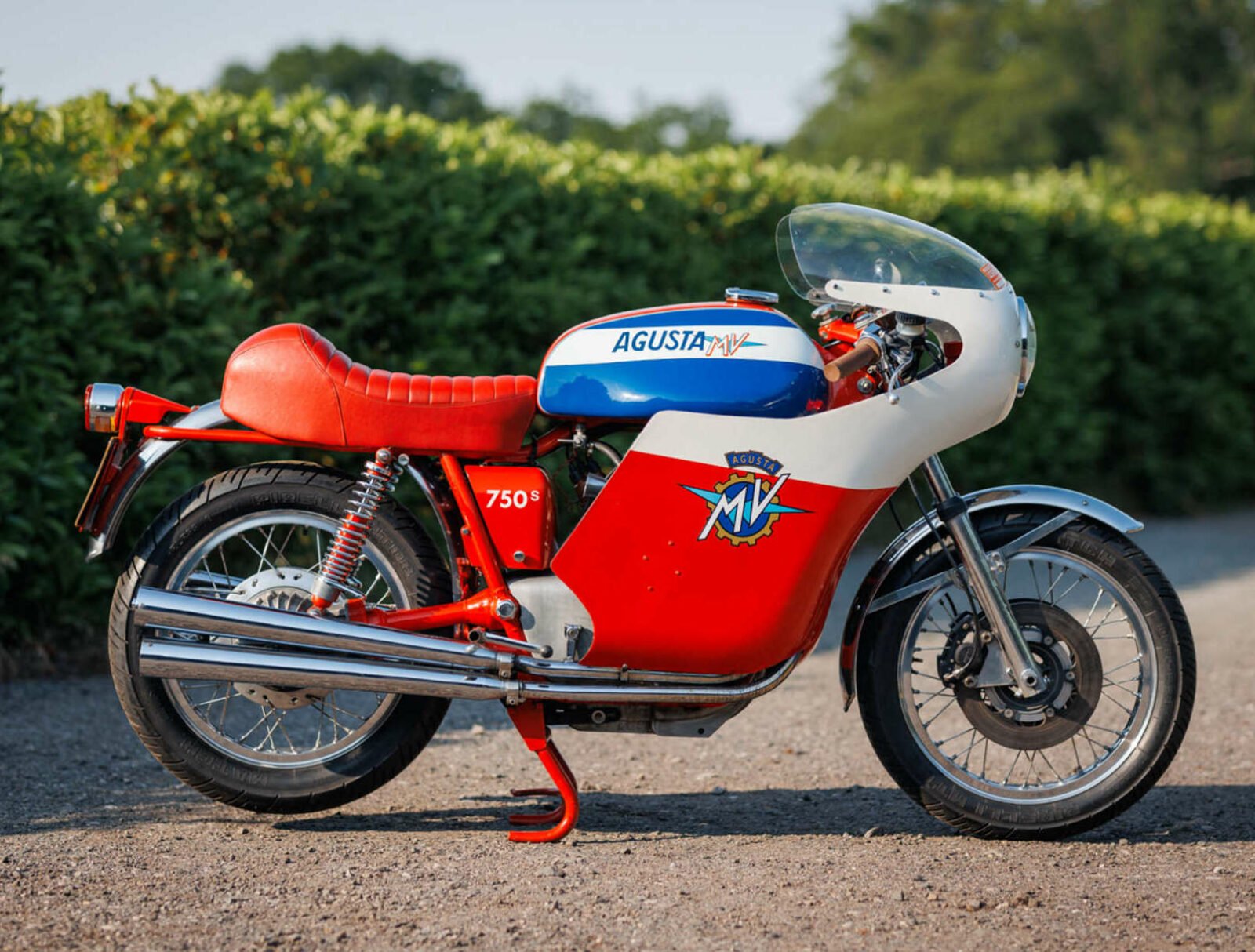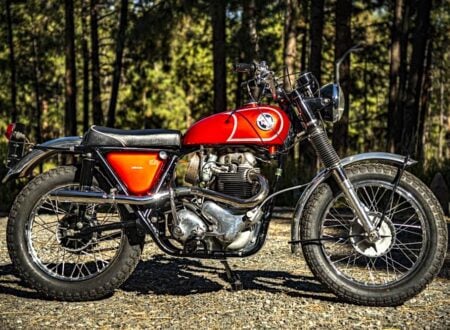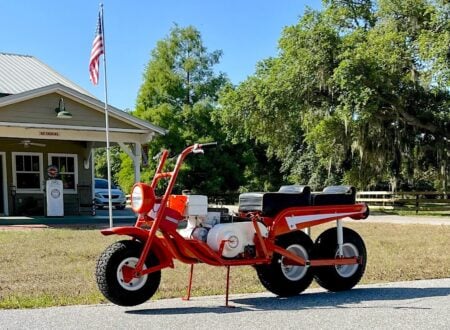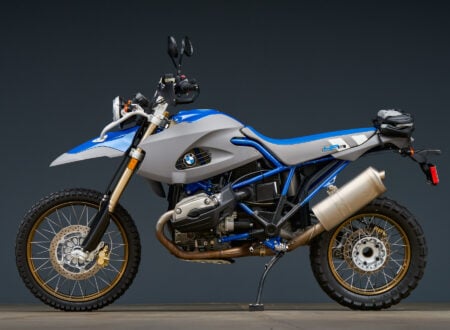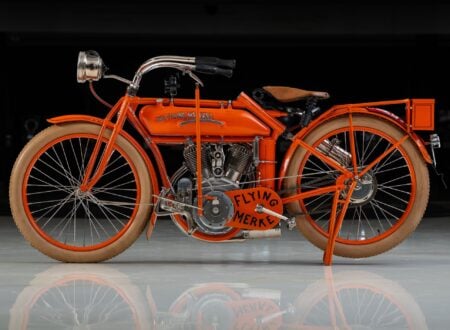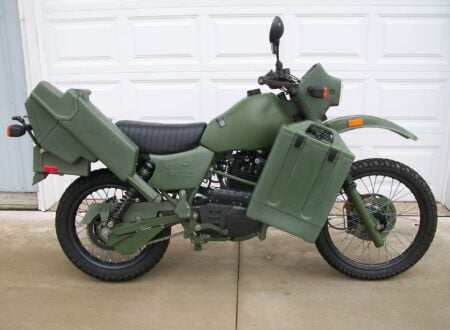This is a restored 1973 MV Agusta 750S that was originally delivered to its first owner in Germany, before later being imported into the UK and restored. The 750S was one of the greatest superbikes of its time, with a price tag to match, and sales of just 583 units in total.
The styling of the MV Agusta 750S has been lauded since its introduction back in 1970, few could afford them however as they sold for three times the price of the then-new Honda CB750.
Fast Facts – The MV Agusta 750S
- Just 583 examples of the MV Agusta 750S would be built between 1970 and 1975, this wasn’t due to a lack of public interest or desire for the model, rather it was down to its exceptionally high price tag.
- MV Agusta had been developing transverse inline-four cylinder motorcycle engines since 1950, after poaching two of the top engineers from Gilera and closely replicating their earlier race-winning inline-four.
- The new 500cc transverse inline-four proved to be just as successful as MV Agusta’s other motorcycles, helping the Italian company to win some of the 270 Grand Prix motorcycle races, 38 World Riders’ Championships, and 37 World Constructors’ Championships they took.
- With its 743cc DOHC inline-four producing 72 bhp at 9,200 rpm the 750S had a top speed of 120 mph (200 km/h), making it one of the highest performing and most desirable production superbikes of its day.
The Incredible Story Of The MV Agusta 750S
The remarkable journey of the MV Agusta 750S finds its origins all the way back in the 1920s, when Carlo Gianini and Piero Remor, two innovative Italian engineers, designed a cutting-edge 500cc SOHC inline-four cylinder motorcycle engine capable of 28 bhp – a remarkable accomplishment by the standards of the era.
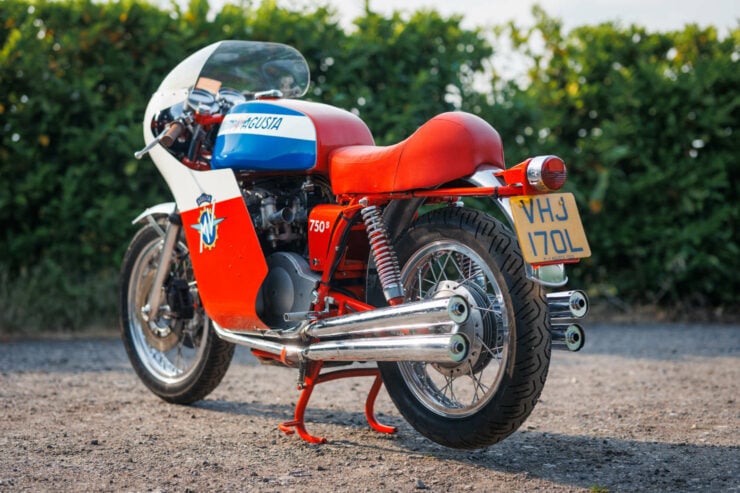

Their creation was not the first inline-four mounted on a motorcycle, but it was the first transversely fitted inline-four, or in more simple terms, the engine was fitted sideways across the frame rather than inline. The predecessors with inline-fours were assembled longitudinally, causing an extended wheelbase and oftentimes inadequate cooling for the rear cylinders.
Although Gianini and Remor had demonstrated the viability of their concept, they were held back by an insufficient funding. Thankfully, aircraft engine manufacturer C.N.A. intervened, taking charge of the project. They further improved the engine into a DOHC inline-four, introducing liquid-cooling and a supercharger, improving its output to more than 80 bhp.
Dubbed “Rondine,” this innovative aero/motorcycle engine powered the bikes that clinched the first and second places at the 1935 Tripoli Grand Prix in Italy. Following this triumph, Guiseppe Gilera of the Gilera motorcycle company, purchased the design, rights, and tooling to the engine.
Gilera’s team of engineers modified the Rondine engine and continued its use in competition until the onset of WWII in Europe in 1939.
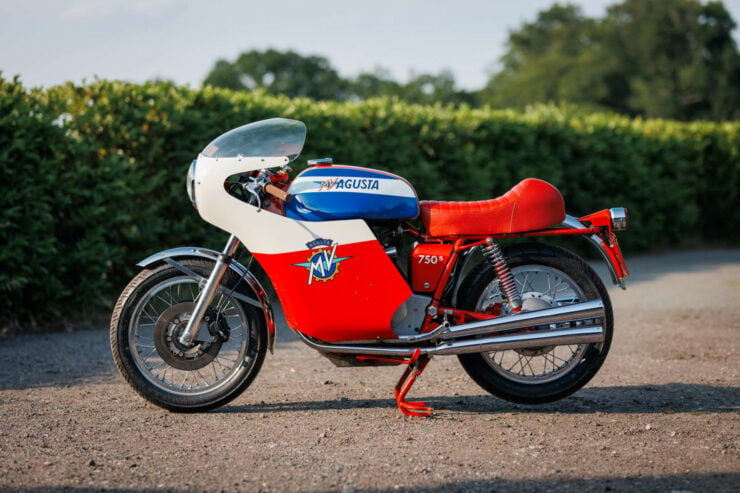

Post-WWII a fresh transverse inline-four was designed from scratch. It was considered one of the most sophisticated motorcycle engines at that time, propelling Gilera riders to numerous race victories and championships in Europe.
MV Augusta – Headhunters Extraordinare
In a strategic move in 1949, MV Agusta managed to lure both the chief engine designer and chief mechanic from the Gilera team – Piero Remor and Arturo Magni. Remor was one of the initial creators of the first transverse inline-four back in the 1920s.
This marked a significant triumph for MV Agusta. Both men embarked on a project to design a new 500cc transverse four that, an engine that was so similar looking to their earlier Gilera design that observers speculated that parts may have been interchangeable.
The newly developed engine demonstrated its mettle repeatedly in competition. Along with other MV Agustas of the period it powered the company to 270 Grand Prix motorcycle race victories, 38 World Riders’ Championship wins, and 37 World Constructors’ Championship triumphs.
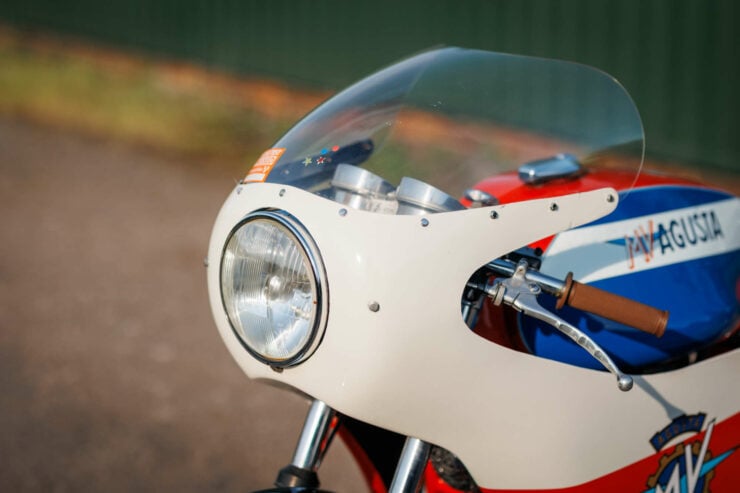

A Street-Legal MV Agusta Transverse Four
For years, motorcycle Grand Prix racing fans had been advocating for a street-legal version of the dominating MV Agusta race bikes. Despite the pressure, the company refused. The probable rationale was their reluctance to have private racers compete alongside factory race bikes and potentially beat them.
Finally, in 1965, MV Agusta conceded and unveiled the MV Agusta 600, a cruiser type motorcycle fitted with a 600cc version of their acclaimed transverse four. Unfortunately, the bike was widely regarded as lacking in aesthetic appeal performance, and it carried a hefty price tag – as a result it didn’t resonate well with buyers.
The 600 witnessed dismal sales, prompting the company to deliver what the public had been longing for – the MV Agusta 750S, in 1970.
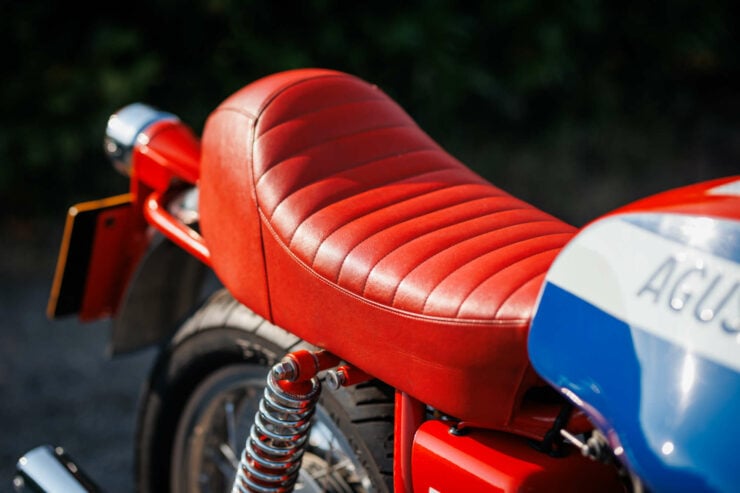

With its engine bored out to 743cc, the DOHC transverse four churned out 72 bhp at 9,200 rpm and boasted a top speed of 200 km/h, or 120 mph. Priced three times higher than the Honda CB750, a Japanese motorcycle directly inspired by the formidable Italian transverse fours, it was a luxury product for a wealthy few.
Despite the performance capabilities of the MV Agusta 750S, sales were severely moderated by the cost, with just over 100 units produced annually over five years, culminating in a total of 583. Today, these motorcycles are considered some of the most collectible superbikes from the era and they typically command the kind of hefty prices you might expect.
The 1973 MV Agusta 750S Shown Here
The motorcycle you see here is one of the later examples of the MV Agusta 750S from 1973, as a result it has twin-front disc brakes, bigger Dell’Orto 27mm carburetors, larger valves, higher-performance camshafts, and an increased compression ratio.
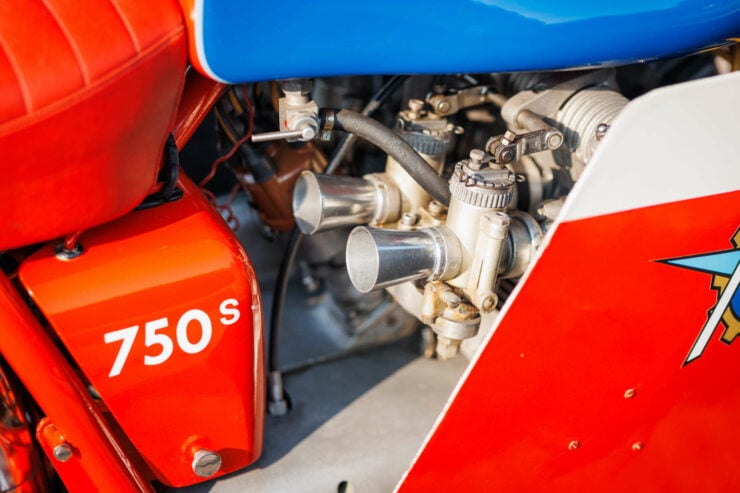

This bike is also fitted with a full streamlined fairing and the SS1 competition carburetor set – both of which were expensive factory options at the time. The bike was exported to Baden-Baden in Germany in 1973 from the MV Agusta factory, then later imported into the UK and restored.
It’s now due to roll across the auction block with Silverstone Auctions on the 30th of July with a price guide of £60,000 – £70,000 which works out to approximately $77,000 – $89,800 USD. If you’d like to read more about it or register to bid you can visit the listing here.
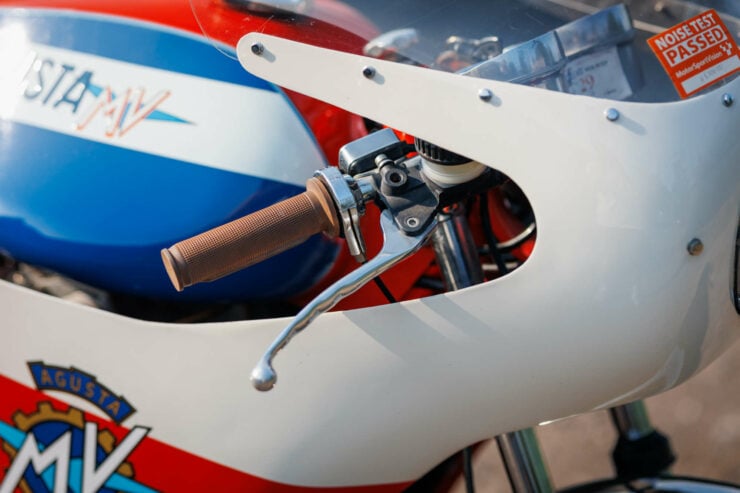
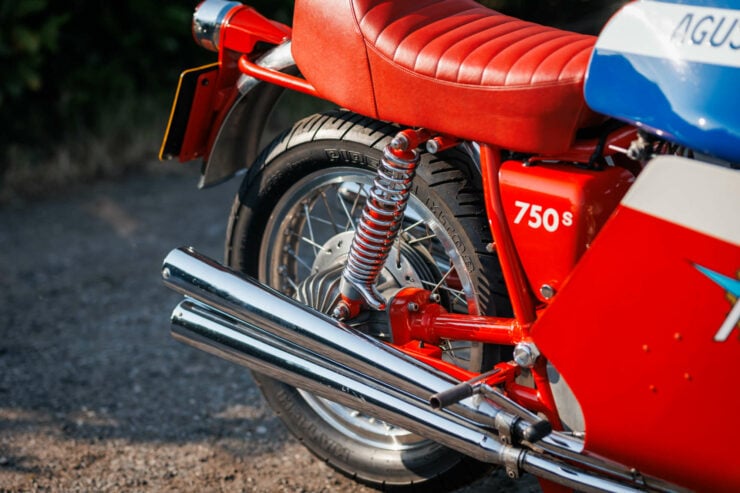
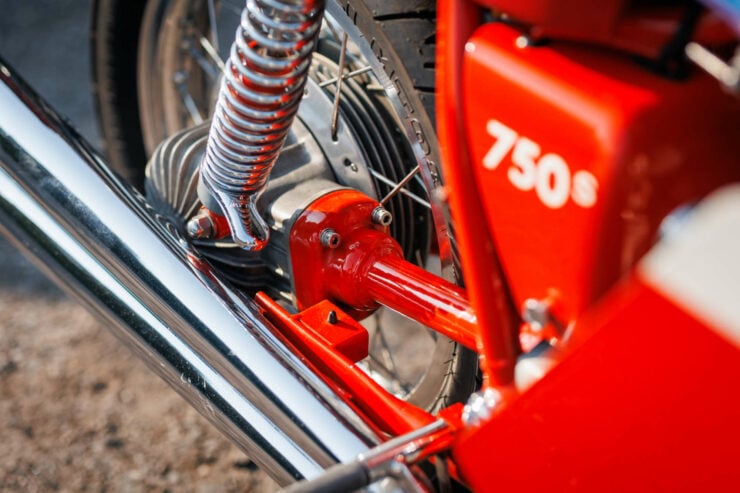
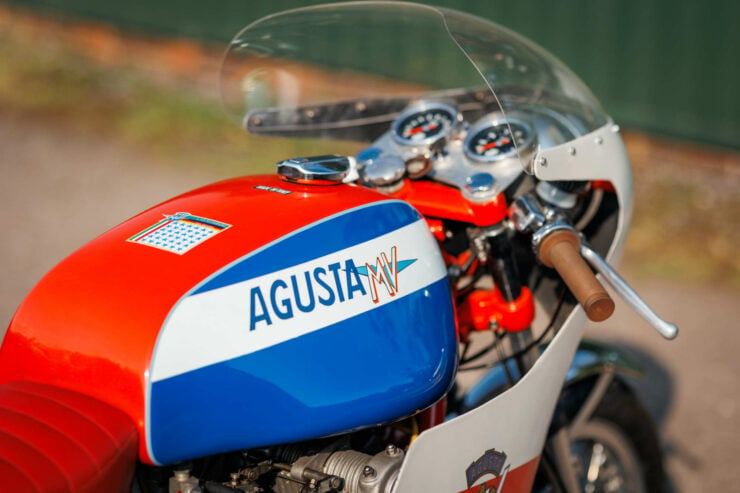
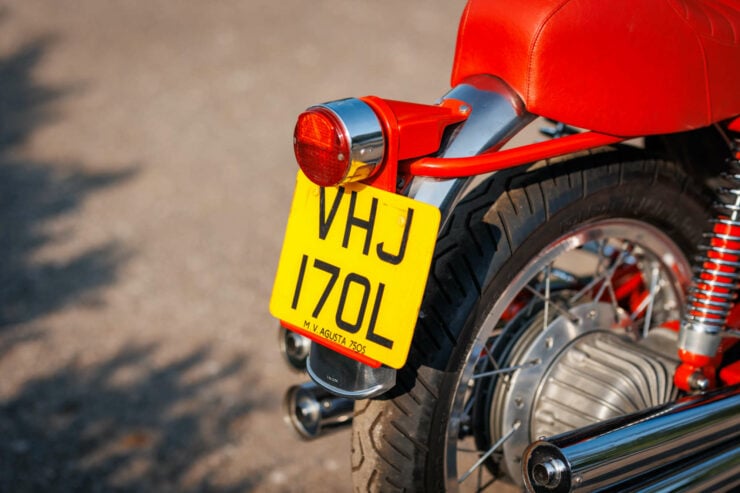
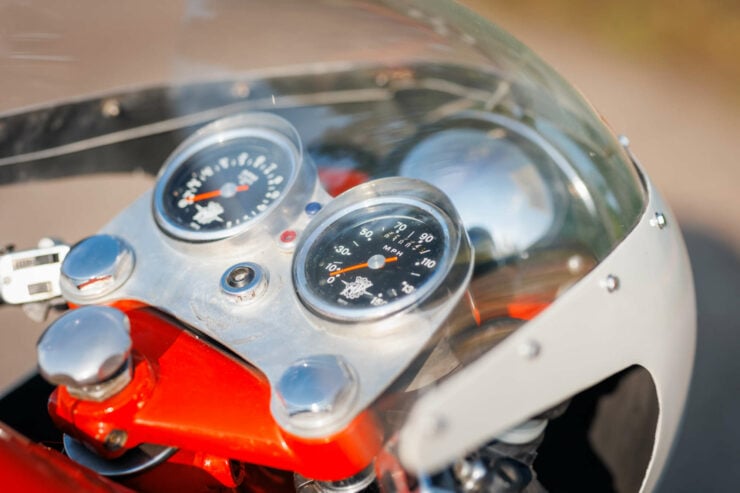
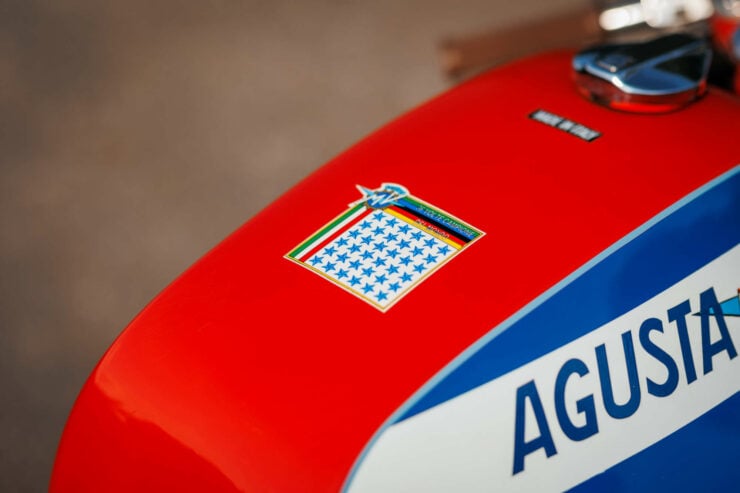
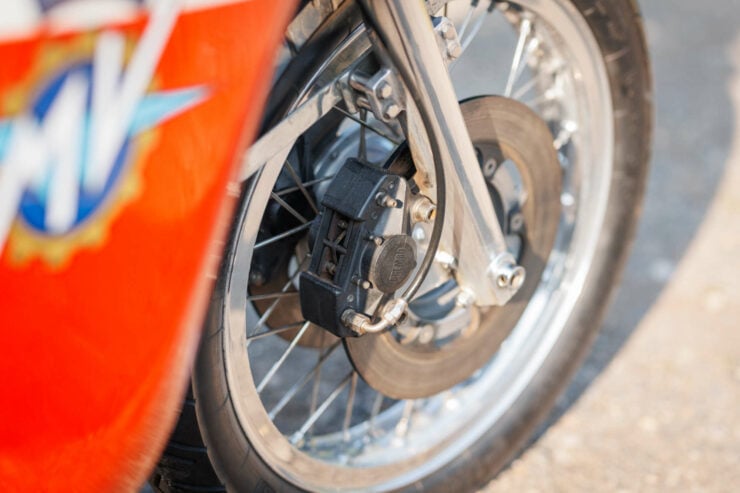
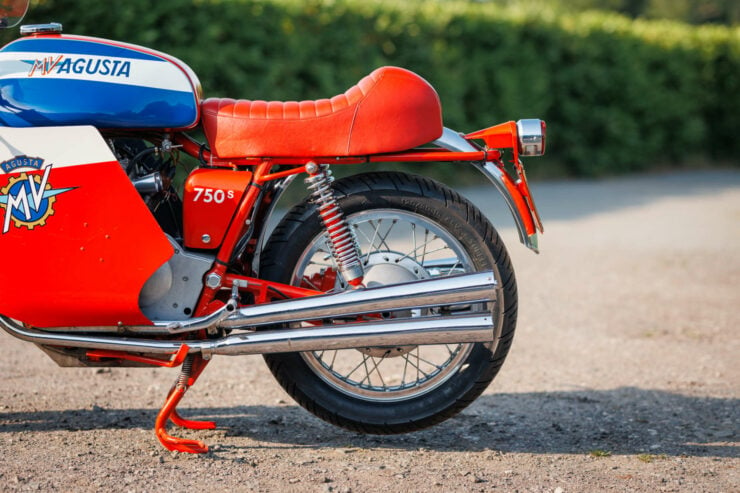
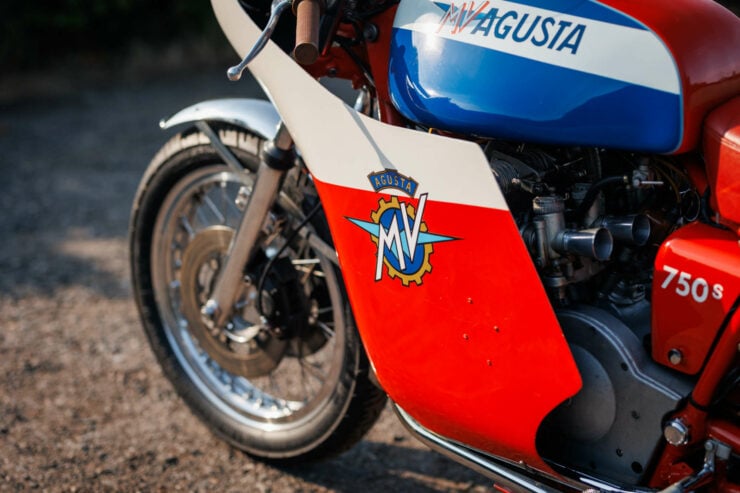
Images courtesy of Silverstone Auctions

Articles that Ben has written have been covered on CNN, Popular Mechanics, Smithsonian Magazine, Road & Track Magazine, the official Pinterest blog, the official eBay Motors blog, BuzzFeed, Autoweek Magazine, Wired Magazine, Autoblog, Gear Patrol, Jalopnik, The Verge, and many more.
Silodrome was founded by Ben back in 2010, in the years since the site has grown to become a world leader in the alternative and vintage motoring sector, with well over a million monthly readers from around the world and many hundreds of thousands of followers on social media.

